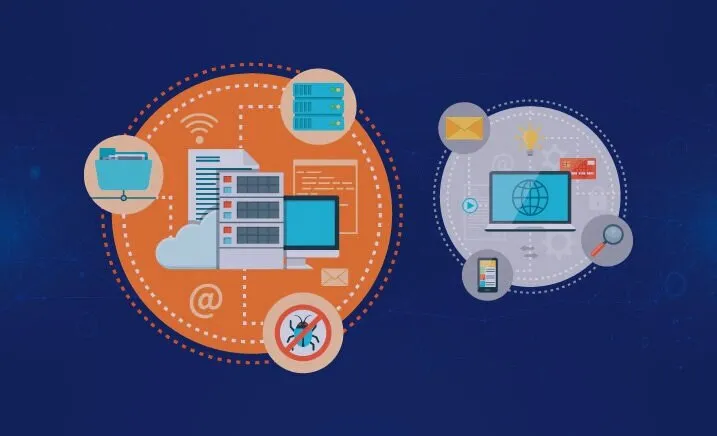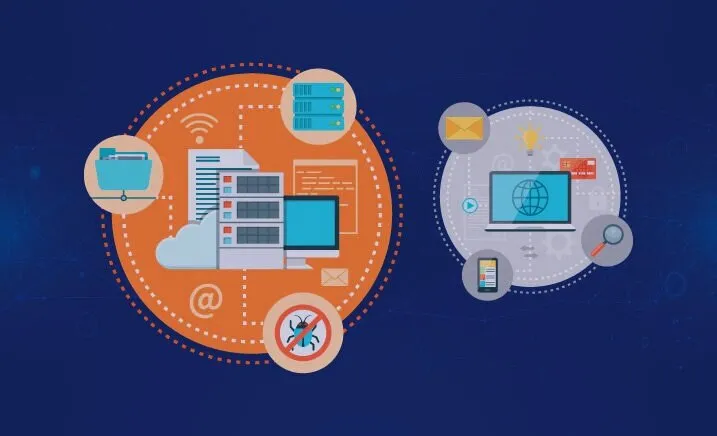7 Real World Use Cases of Robotic Process Automation (RPA) in Media
Blog: Cigen

There is currently an exponential growth of media content, which is both good and challenging for media and entertainment companies. It is good because the availability of content is the main factor that drives media progress, but it is also demanding because it calls for highly efficient organization.
Other issues that must be dealt with in order to stay competitive in the fierce media market are the stabilization of legacy businesses, the reduction of back-office costs, as well as the creation of satisfactory experiences for growing and more demanding audiences. How are news, media, cable services or internet providers to handle challenges of this kind?
Deployment of robotic process automation in media is the answer that many businesses are turning to. Spotify, Netflix, or Facebook are some examples of media companies whose large scale success is at least to some extent contingent on the utilisation of disruptive technologies.
"Spotify, Netflix, or Facebook are some examples of media companies whose large scale success is at least to some extent contingent on the utilisation of disruptive technologies."
CLICK TO TWEET
This being said, the question What can you actually do with RPA in the media industry? is legitimate. So let us pursue our preferred pragmatic approach and answer based on consideration of some robotic process automation use cases, which should give you a taste of what you can do with RPA and what for.
Real world use cases of robotic process automation in media
1. Device activation
We can all agree that we live in the century of fast action, right? Media companies must ensure that mobile devices can be swiftly activated, in order to live up to customers’ expectations. Software robots can efficiently work across several systems in parallel, which drastically reduces processing times for device activation from days to hours.
2. Customer management
There is a growing demand worldwide for network expansion, since hardly any household considers itself ‘complete’ without services like broadband access to internet, cable TV with a wide spectrum of available programs, landline, mobile telephone, etc. Consequently, media companies must upgrade the customer management system in order to be able to identify quickly and accurately the premises that are likely to welcome the services that they provide.
This is part of streamlining the expansion process, a part that is characterized by being repetitive, high volume, and rule based. All these are process features that call for RPA. With the help of software robots, the company’s sales team can be more proactive by tracking the construction sites and knowing exactly to whom and when to make a service offer.
3. Service requests
Network expansion also brings in the challenge of dealing with more demands from a higher number of clients, who are increasingly aware of their rights to have their complaints addressed in due time. Automation of service requests by RPA can deliver satisfactory resolutions regardless of the typical, daytime working hours.
Chatbots can also decide which presenting problems require human intervention, and hence should be escalated to the employees. Bots’ capacity to work around the clock perfectly serves the goal of reducing customers’ waiting times, thereby increasing their satisfaction and ensuring a higher level of retainment.
Thank you!4. Metadata updates
Metadata specifications must be updated rather frequently by media and entertainment companies in order to remain consistent with the ever changing standards imposed by audience preferences, and thus maintain their earning potential.
Manual updates are not only error prone, but they also involve higher incurring costs. On the other hand, deployment of software robots to auto update metadata ensures access to state-of-the-art, correct data.
5. Content creation
Structured news content, whether we talk about earning reports, latest results in sport competitions, or even advertising, can be easily automated. RPA in combination with AI technologies leads to intelligent automation, which can be used even for the creation of less structured content.
The bots can track trending news online, and then automatically create top relevance posts. The above mentioned metadata updates can also be leveraged for content preparation for Subscription Based Video on Demand (SVOD) services.
6. Content discovery
Even basic metadata like title, episode name, or synopsis, can be exceedingly complex for archived content. With the help of natural language processing, image processing, or machine learning, intelligent automation can be used to deal with both structured and unstructured data, and to isolate a higher number of more specific keywords, e.g., props in a scene.
The keywords can be included along the timeline in a video, resulting in much richer metadata. The outcome? The links established between previously independent content optimize search and, consequently, enhance audiences’ engagement with the programs offered by your company. Moreover, content as well as promotions can better target specific audiences based on relevance.
7. Grouping files and emailing to customers
Use of screen scraping, Optical Character Recognition, or basic pattern recognition technologies facilitate data extraction from PDF or Excel documents, which reduces the need to key in data.
Bots’ capacity to access documents across multiple systems allows them to group the PDFs into zip folders according to customers names encountered in Excel sheets. Subsequently, bots can collate the PDFs, encrypt them and, after identifying the address in Excel, email them to clients.
Conclusion
This list of use cases of robotic process automation in media shows convincingly that leveraging disruptive technologies can help the industry to better manage challenges such as continuously rising content costs, or raising customer demands.
Implementation of RPA and joint usage with other AI technologies are part of strategic choices meant to maximally monetize all existing resources. By doing so, your media company is more likely to achieve goals such as lower production costs, reduced time for service delivery, and, perhaps most importantly, improved customer experience.
We end by mentioning once again that this is part of a series of articles about the particularities of RPA in various industry sectors like telecom, transportation and logistics, banking, or healthcare, pragmatically oriented towards application areas. If you find the information useful, subscribe to the newsletter below to ensure that you stay updated with news about the fast-evolving intelligent automation services.
